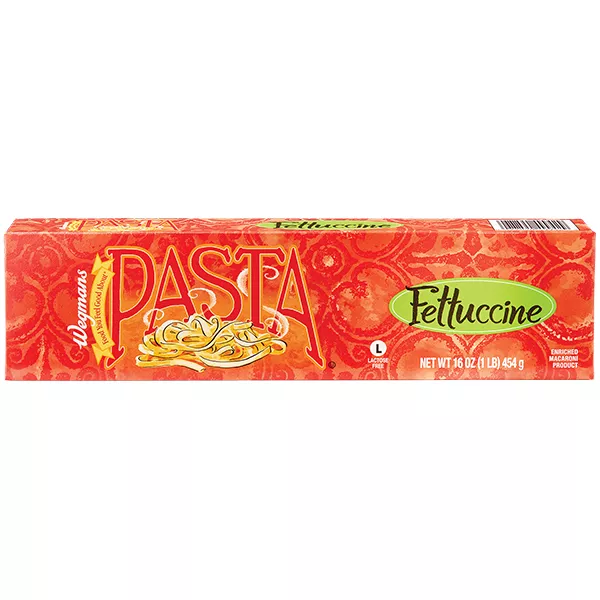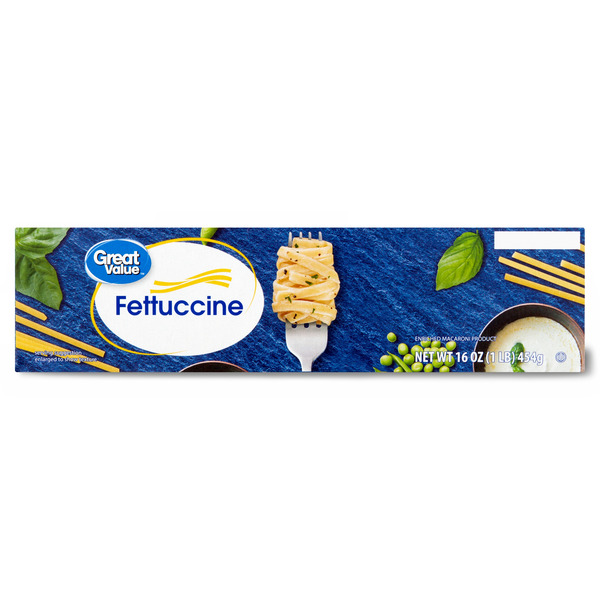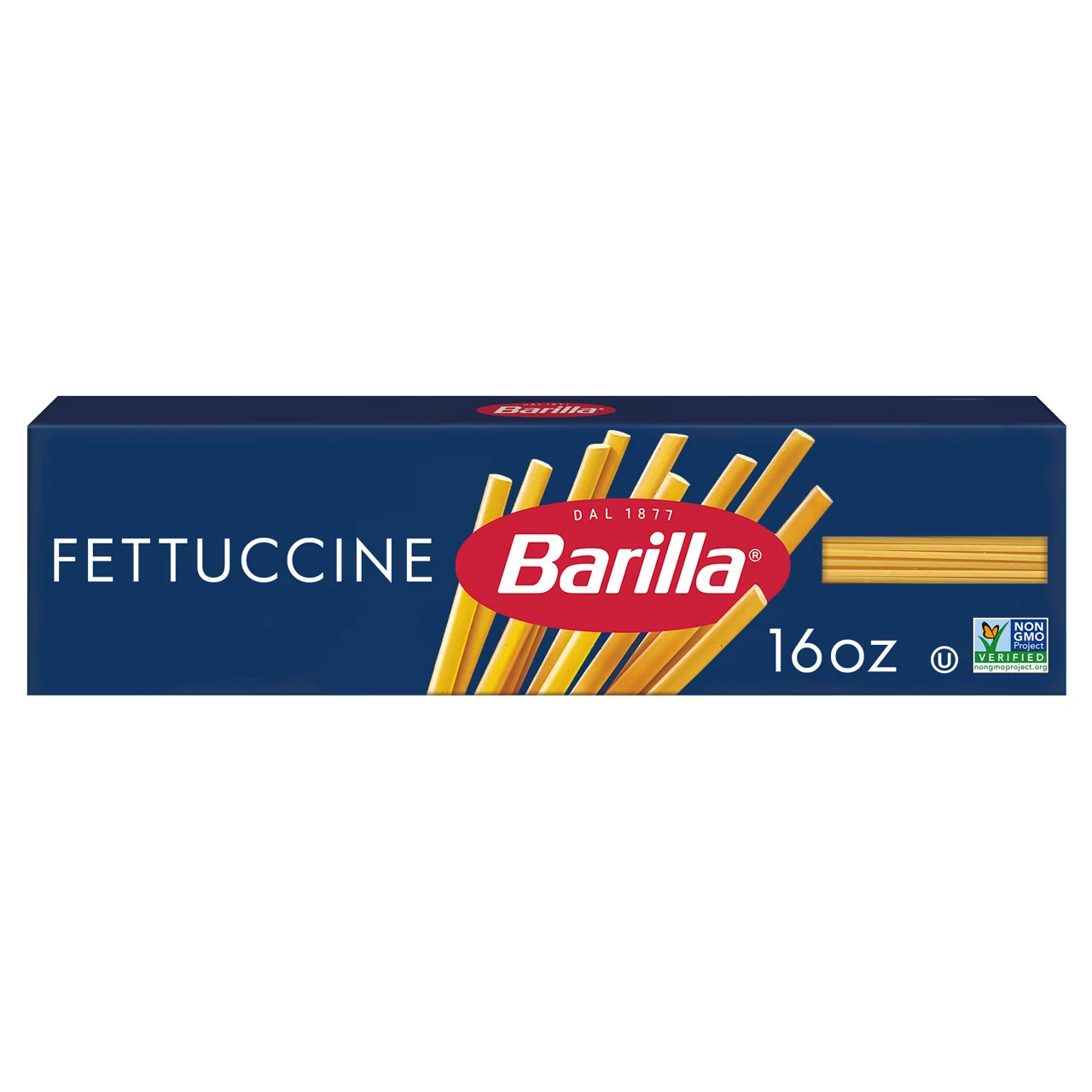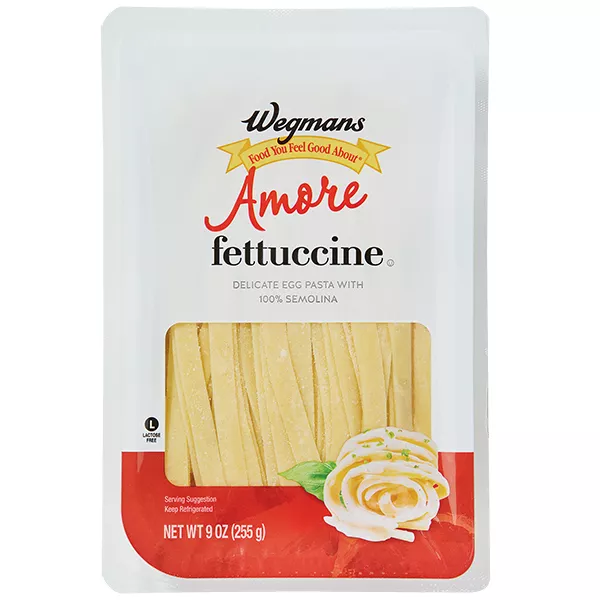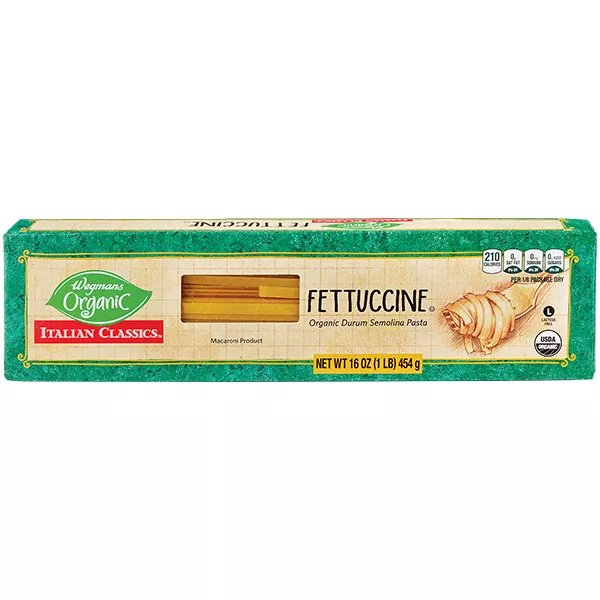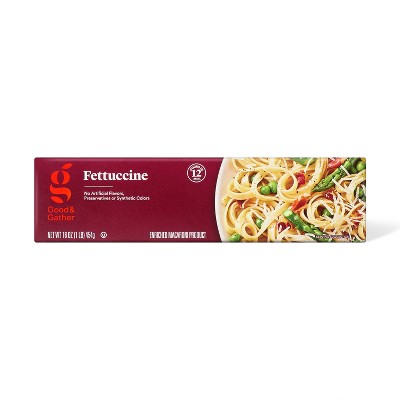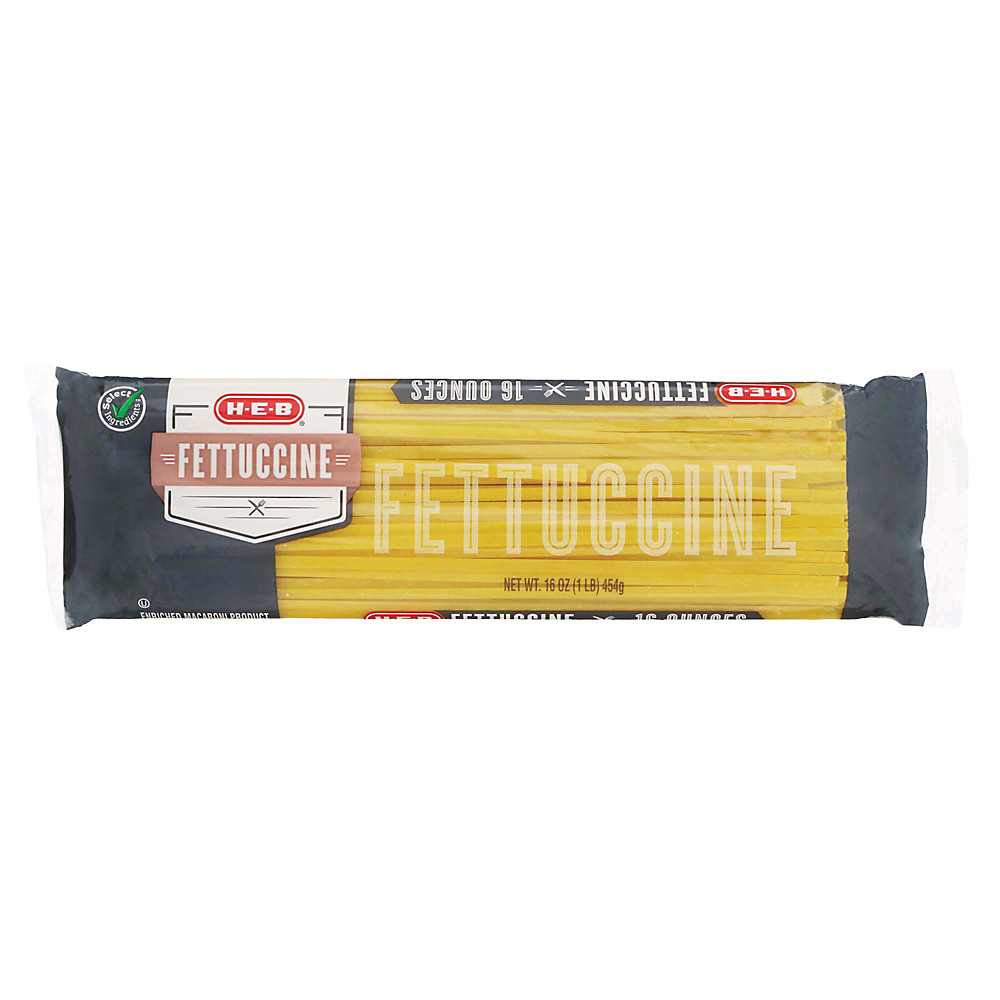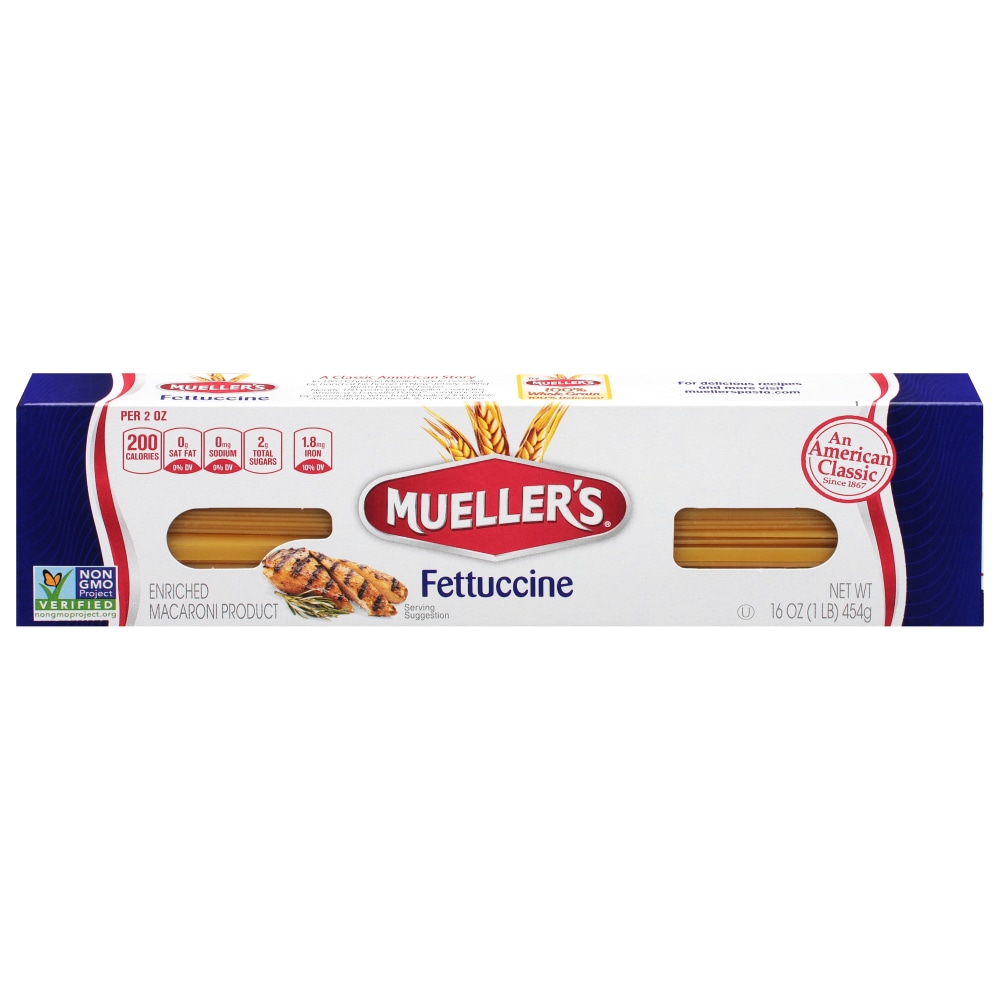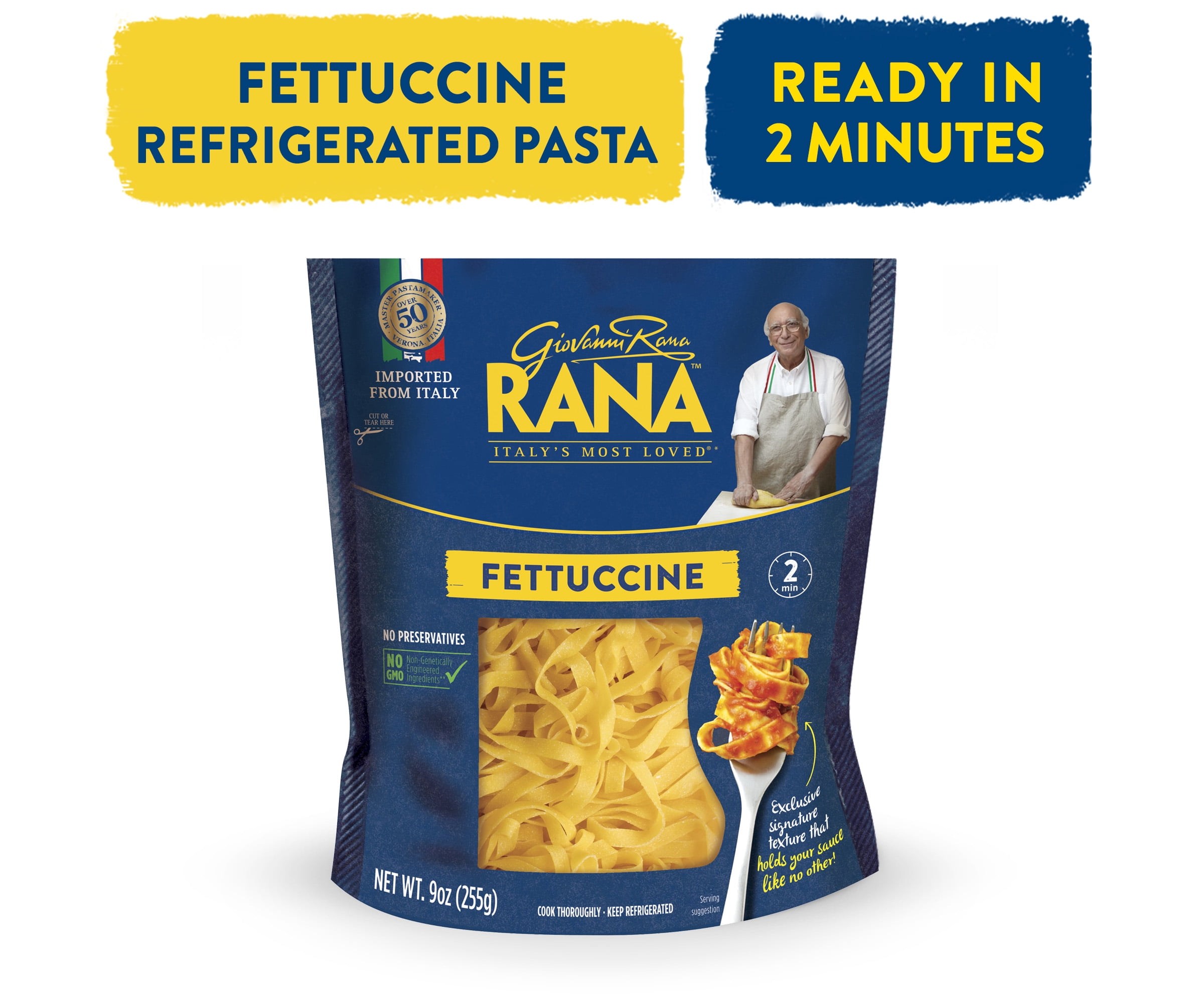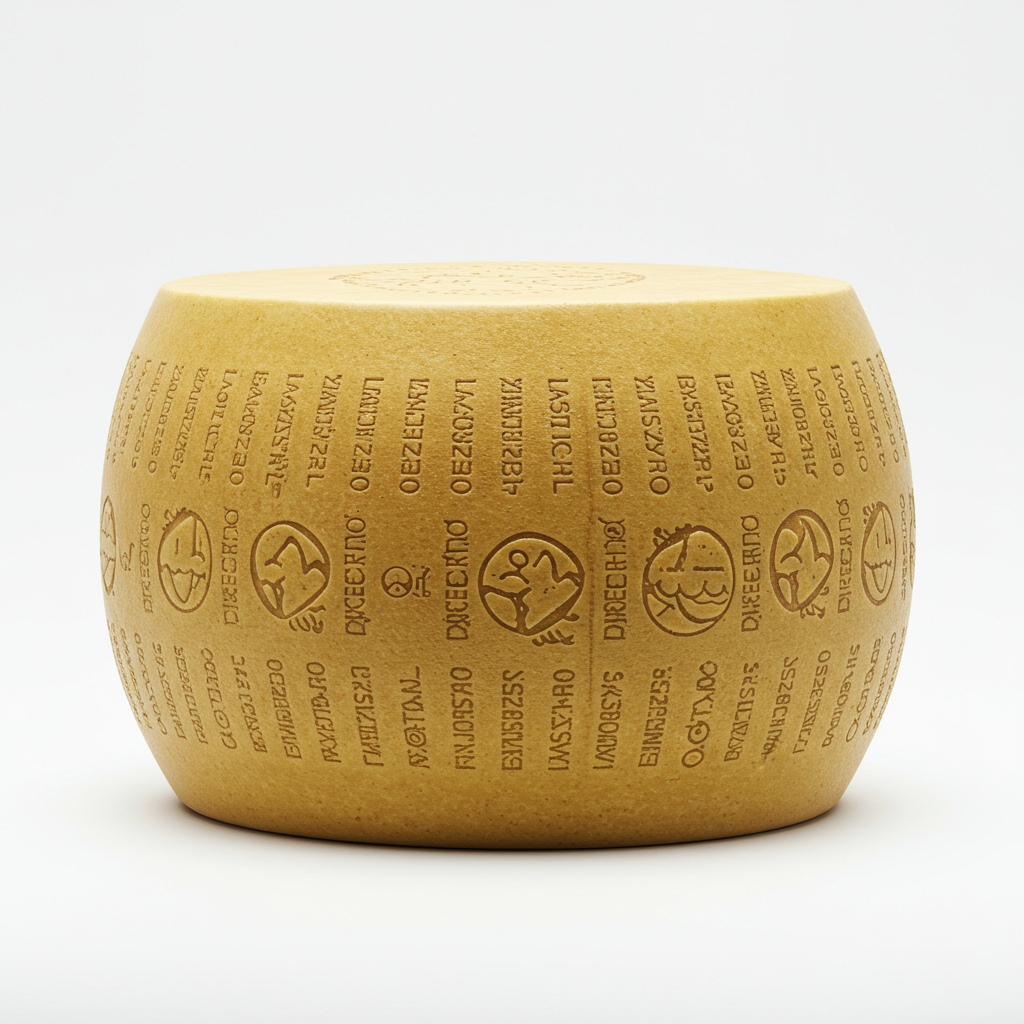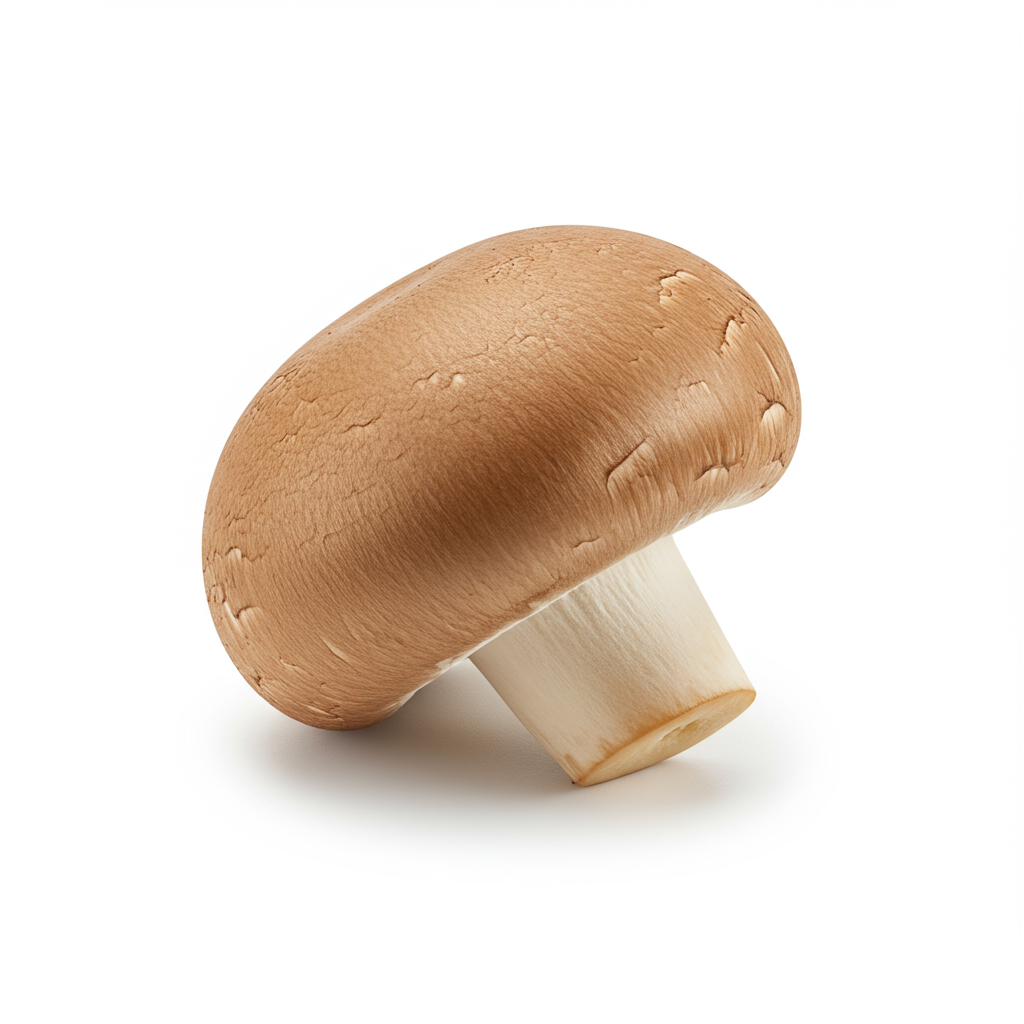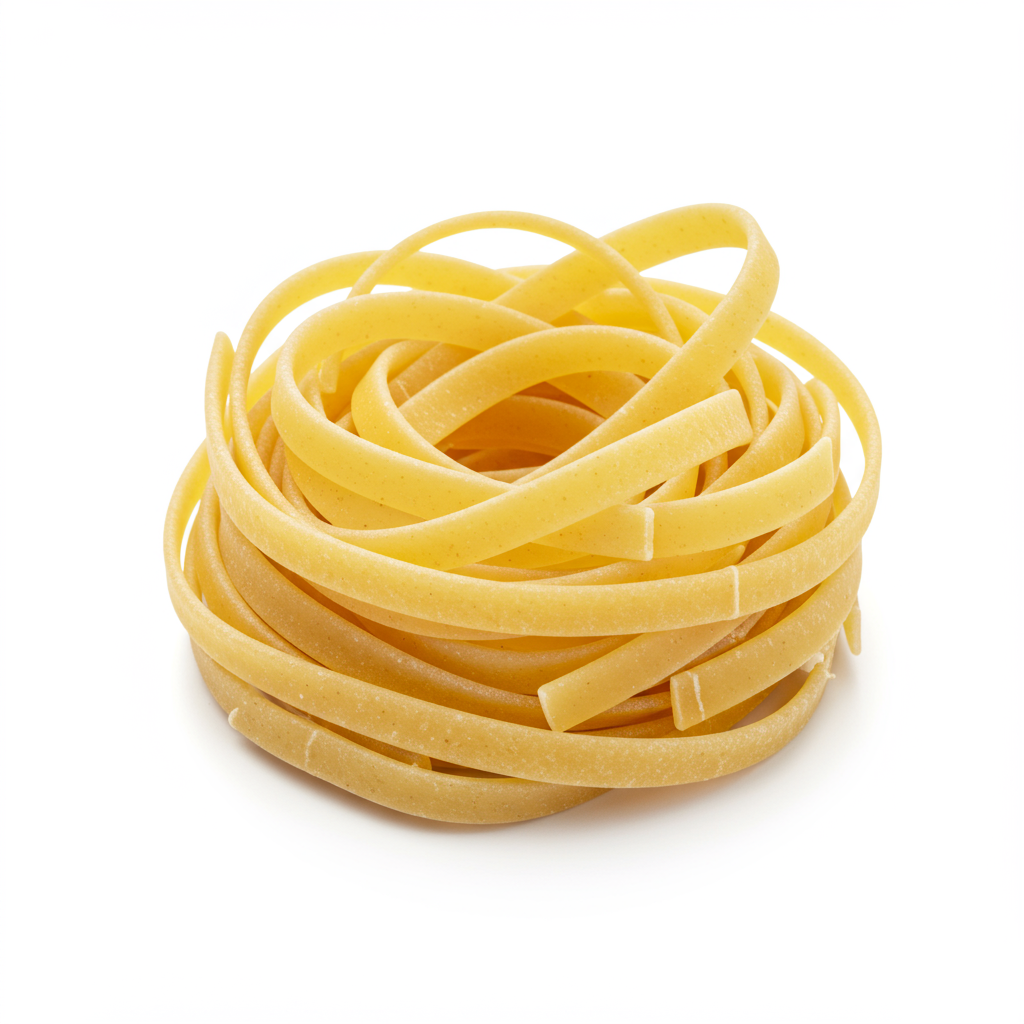MAIN DISHES
SIDE DISHES
Fettuccine Pasta
Fettuccine pasta is a type of Italian noodle beloved around the world. It is characterized by its long, flat, ribbon-like shape, which is typically about ¼ inch wide. Made from a simple mixture of flour, water, and sometimes eggs, fettuccine is available in both fresh and dried forms, making it a versatile staple for home cooks everywhere.
Commonly associated with the rich and creamy sauce of fettuccine Alfredo, this pasta pairs deliciously with a variety of sauces, from the light and tangy to the hearty and robust. It excellently complements meat, seafood, and vegetables, offering endless possibilities for creative and satisfying meals.
84%
CARBS
2%
FAT
14%
PROTEIN
1,036 Fettuccine Pasta Products
Used In 122 Recipes
3
Creamy Cajun Chicken Fettuccine Alfredo
4
Creamy Broccoli and Chicken Fettuccine Feast
4
Mediterranean Shrimp and Spinach Fettuccine
2
Savory Parmesan Chicken and Asparagus Fettuccine
3
Lemon Garlic Tuna Pasta Delight
3
Creamy Shrimp and Spinach Fettuccine
3
Explosive Shrimp Alfredo
5
Smoky Corn Chipotle Fettuccine
Fettuccine Pasta Is Frequently Used With
Fettuccine Pasta FAQ
Fettuccine pasta is a beloved and versatile ingredient, offering a mid-sized shape that works well with not just the famous Alfredo sauce, but also a wide variety of other sauces and toppings. Many beginners tend to overcook fettuccine, turning it mushy and unappetizing. It's crucial to cook it al dente, or 'to the tooth', meaning that it should still have a slight chew to it. Furthermore, always season your pasta water with salt; it's your best chance to flavor the pasta itself. And remember, you can save a hefty scoop of pasta water before draining. This starchy water can add silkiness and body to your sauce, and help it cling to the pasta. A little-known trick is to finish the pasta in the pan with your sauce. This way, the pasta absorbs some of the sauce's flavor, and helps the toppings evenly distribute.
How long should I cook fettuccine pasta?
Do I need to add oil to the boiling water while cooking fettuccine pasta?
What sauces go best with fettuccine pasta?
Can I use fettuccine pasta in a pasta salad?
Should I rinse pasta after cooking it?
How can I prevent fettuccine from sticking together while cooking?
Can I replace spaghetti with fettuccine in recipes?
What's the difference between fettuccine and linguine pasta?
Is fresh fettuccine pasta better than dried?
Can I prepare fettuccine pasta ahead of time?
Expiration & Storage Tips
When does fettuccine pasta expire?
Dried fettuccine pasta usually lasts for 1-2 years past the printed 'best by' date, if it remains unopened. However, for the best quality, it is suggested that you consume it within the date indicated. Once opened, dried pasta should be used within 1 year. Fresh pasta, on the other hand, should be used within a couple of days if stored in the fridge, while it can last for 2-3 months if frozen.
How do you tell if fettuccine pasta is bad?
If your dried fettuccine pasta has developed a funny smell, changed color, or gone moldy, it's time to say goodbye. Fresh pasta will become gummy and unpleasantly sticky when it's gone bad. If you see signs of discolouration or mold, or smell something off, it's time to throw it out.
Tips for storing fettuccine pasta to extend shelf life
• Store dried pasta in a cool, dry place away from direct sunlight. Re-seal opened packages or transfer to a container with a tight lid.
• Fresh pasta should be kept in the refrigerator in its original packaging.
• To freeze fresh pasta, arrange it in a single layer on a baking sheet until it is frozen, then transfer it to a sealable freezer bag.
• Avoid freezing dried pasta as it will degrade its texture and taste.
• Always ensure to label your pasta with the date of purchase/opening, to keep track on its shelf life.
EXPIRES WITHIN
19 - 29
MONTHS
Equivalents
Substitutes

Whole Grain Fettuccine Pasta

Linguine

Pappardelle

Tagliatelle Pasta
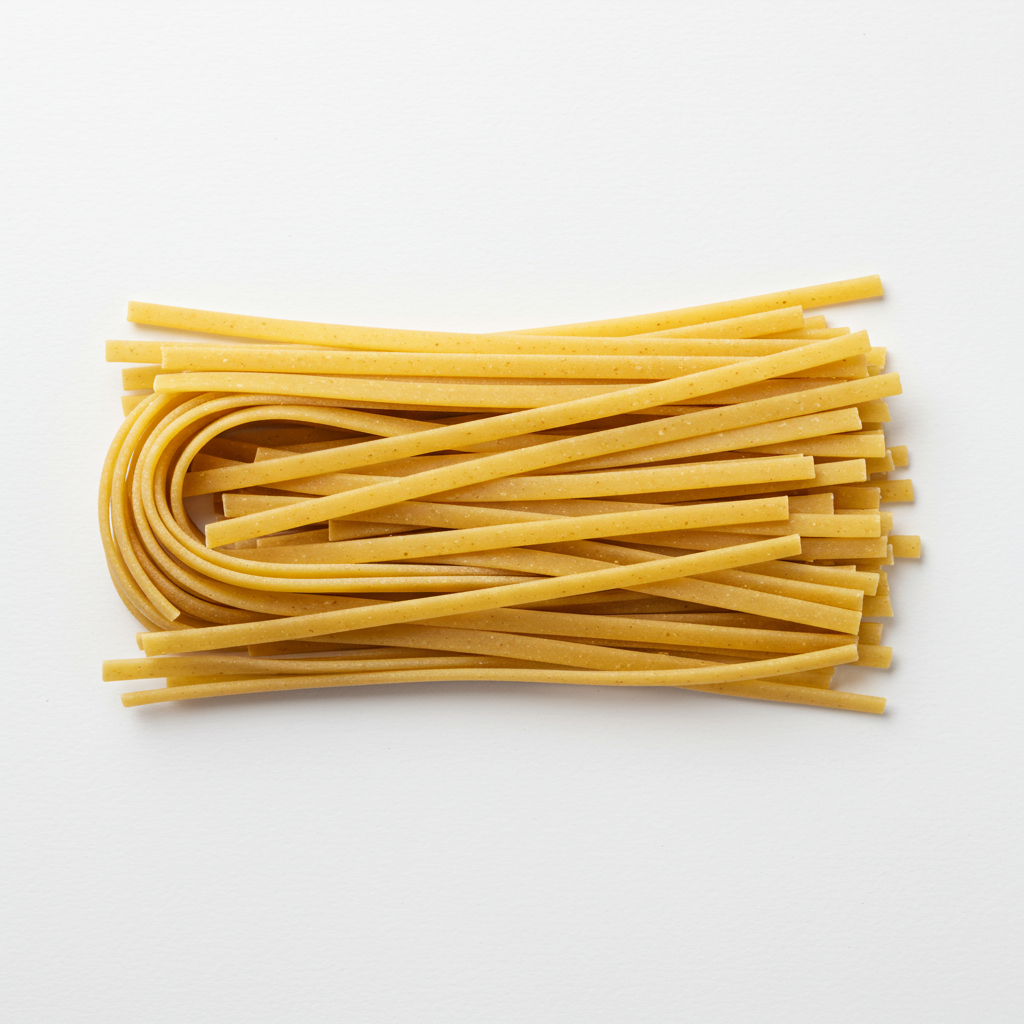
Chickpea Linguine Pasta

Gluten Free Linguine

Whole Grain Linguine

Thin Spaghetti
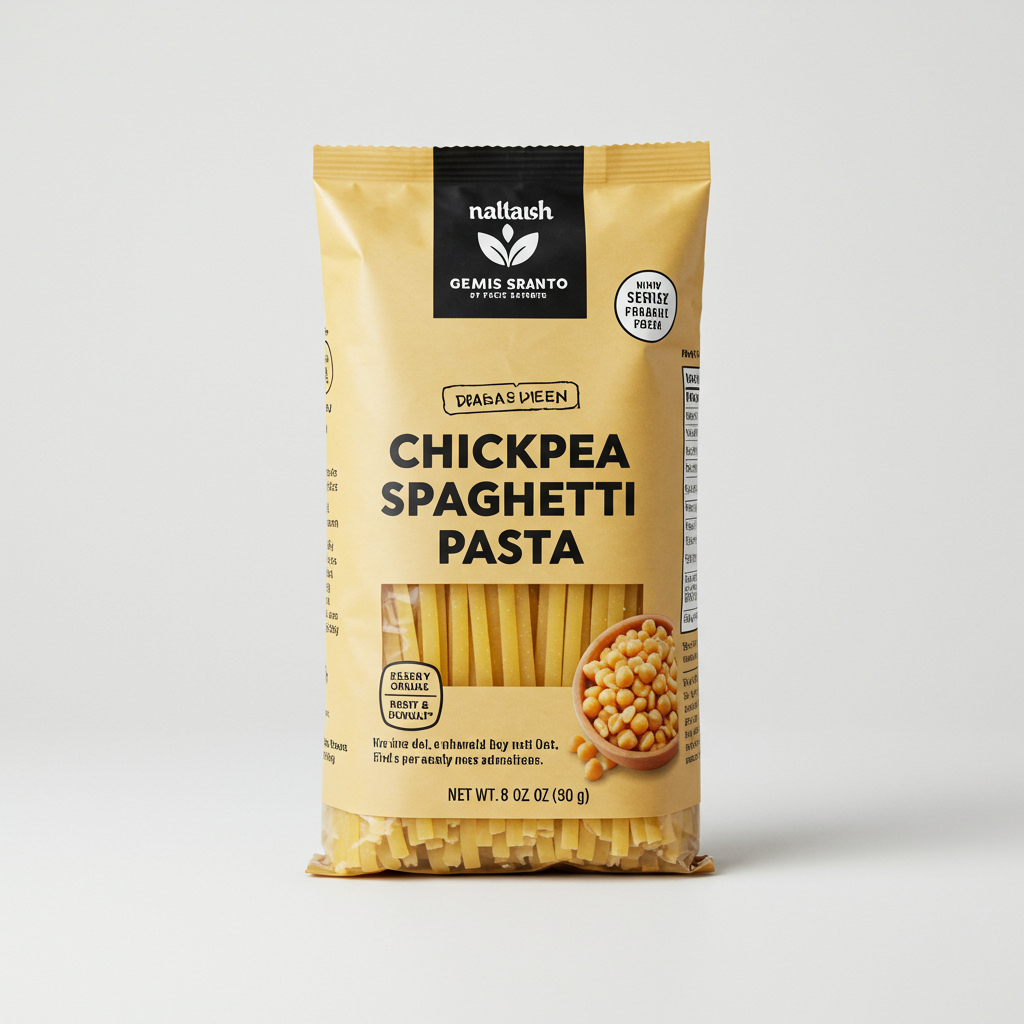
Chickpea Spaghetti
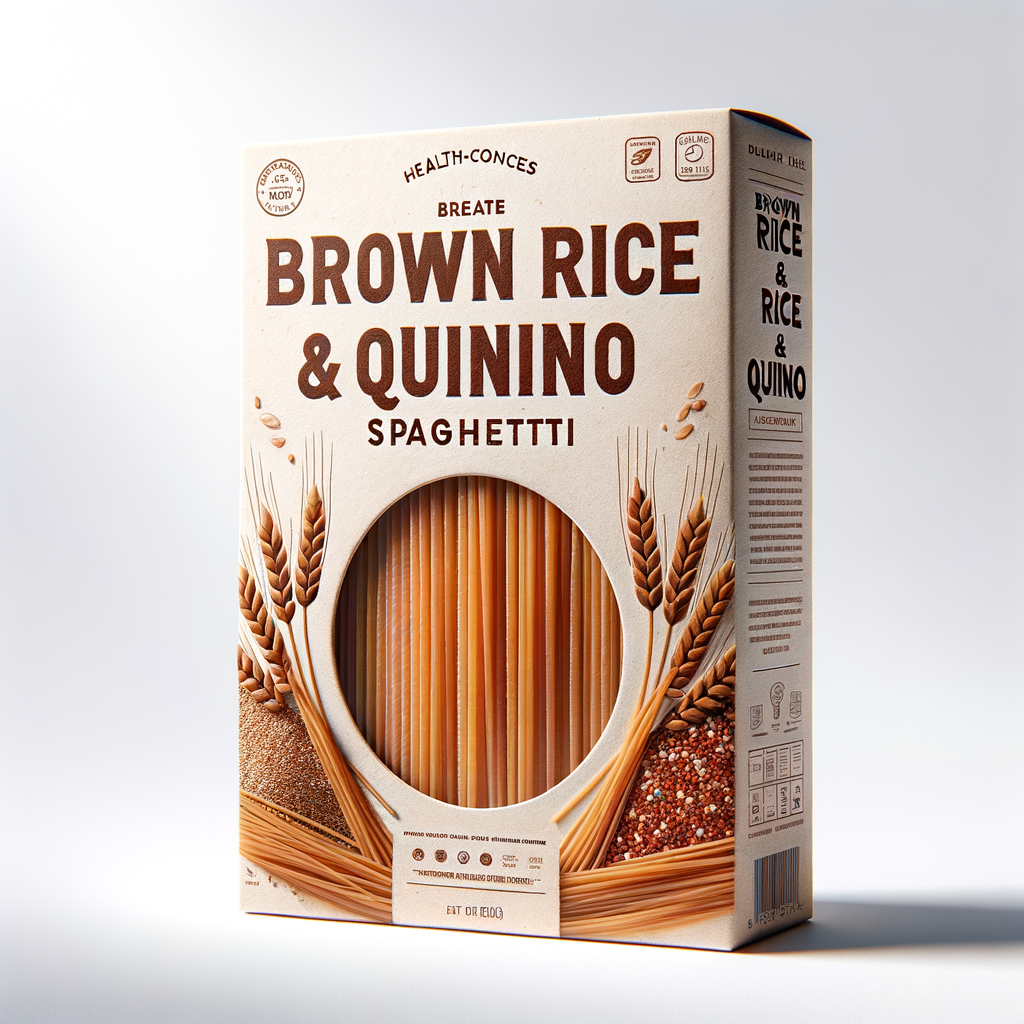
Rice & Quinoa Spaghetti
See All
Health Info
Macros
42g
CARBS
1g
FAT
7g
PROTEIN
Allowed on these diets
LOW FAT
HIGH CALCIUM
VEGETARIAN
VEGAN
LACTOSE FREE
Contains these allergens
WHEAT

